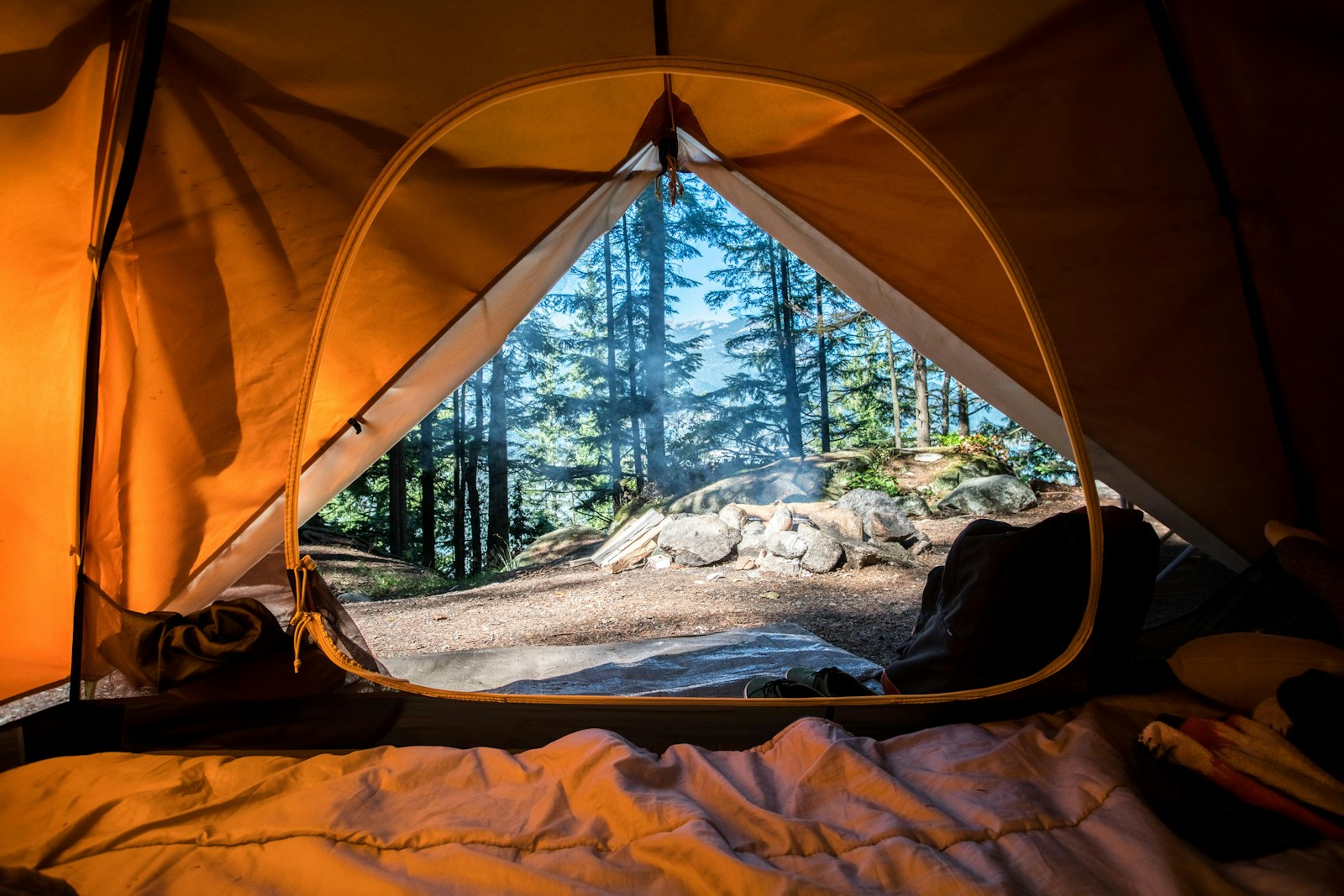If you’re an avid camper, chances are you know how important it is to properly maintain and clean my tent. After all, your tent is your home away from home in the great outdoors, and keeping it in pristine condition ensures that it will continue to protect you from the elements on your future adventures. But how exactly do you go about maintaining and cleaning your tent? In this article, we will provide you with some practical tips and tricks to help you keep your tent in top shape, ensuring that it withstands the test of time and remains a reliable shelter for your outdoor escapades. So let’s dive in and discover the secrets to tent maintenance and cleaning.

Choosing the Right Tent Material A Big Step To Maintain And Clean My Tent
When it comes to choosing the right tent material, there are a few factors to consider. First and foremost, think about the climate in which you will be camping. If you are camping in a hot and sunny environment, it is important to look for a tent material that offers UV resistance. This will ensure that the fabric does not deteriorate or fade under the harsh rays of the sun. On the other hand, if you are camping in a rainy or humid climate, it is crucial to choose a tent material that is waterproof. Look for fabrics that have a high water-resistance rating to keep you dry and comfortable during your camping trip.
In addition to considering the climate, it is also important to think about the durability of the tent material. Camping can be rough and demanding on your gear, so it is essential to choose a material that can withstand the wear and tear of outdoor adventures. Look for materials that are tear-resistant and have a strong stitching. This will ensure that your tent lasts for many camping trips to come.
Lastly, look for a tent material that has water and UV resistance. This will provide you with optimal protection from the elements and help extend the lifespan of your tent. Water resistance will prevent water from seeping through the fabric, while UV resistance will prevent the fabric from deteriorating under the sun’s rays. By choosing a tent material that offers these features, you can enjoy your camping trips without worrying about your tent getting damaged.
Cleaning and Drying the Tent
To keep your tent in good condition, regular cleaning and drying are essential. Here are some steps to follow when cleaning your tent:
- Remove Loose Dirt and Debris: Before cleaning, make sure to remove any loose dirt and debris from both the interior and exterior of the tent. Use a brush or a soft cloth to gently sweep away any dirt or dust.
- Spot Clean Stains: If there are any stubborn stains on your tent, spot cleaning is the best way to handle them. Use a mild soap or detergent mixed with water to gently scrub the stained area. Avoid using harsh chemicals or abrasive cleaners as they can damage the tent fabric.
- Hand Wash the Tent: Fill a large basin or bathtub with lukewarm water and a gentle tent cleaner or mild soap. Gently submerge the tent into the water and use a soft cloth or sponge to clean the entire surface. Be careful not to scrub too vigorously as this can damage the fabric coatings.
- Air Dry the Tent: After washing, hang the tent upside down or lay it flat on a clean, dry surface to air dry. Avoid using a dryer or hanging the tent in direct sunlight as this may cause the fabric to shrink or fade. Ensure the tent is completely dry before storing it to prevent mold and mildew growth.
Storing the Tent Properly
Properly storing your tent when it is not in use is crucial for maintaining its longevity. Here are some steps to follow when storing your tent:
- Remove All Traces of Moisture: Before storing your tent, ensure it is completely dry. Even the smallest amount of moisture can lead to mold and mildew growth during storage. Allow sufficient time for the tent to air dry before packing it away.
- Fold the Tent Neatly: Start by folding the tent in half lengthwise, keeping the zippers on the outside. Then fold it into thirds or quarters, depending on the size of your tent. Avoid folding it too tightly to prevent creases or damage to the fabric.
- Store in a Cool and Dry Place: Find a cool, dry place to store your tent. Avoid areas prone to high humidity or extreme temperature fluctuations, such as attics or basements. Ideally, store it in a breathable storage bag or container to allow air circulation and prevent moisture buildup.
- Avoid Long-term Compression: While it may be tempting to squeeze your tent into a tight space to save storage space, long-term compression can damage the fabric and affect its waterproofing abilities. Instead, store the tent loosely, allowing it to retain its natural shape.
Following these storage guidelines will help preserve the integrity of your tent and ensure it is ready for your next camping adventure.
Repairing Tent Damage
With regular use, tents can sustain damage such as small holes, tears, leaky seams, or broken zippers. Here are some tips for repairing common tent damage:
- Patch Small Holes and Tears: For small holes or tears in the fabric, patching them promptly is essential to prevent further damage. Use a patch kit specifically designed for tents or a strong adhesive tape to cover the damaged area. Ensure the patch is securely attached and waterproof.
- Seal Seam Leaks: Seam leaks can occur over time due to wear and tear or seam tape failure. To seal seam leaks, apply seam sealer along the affected area using a small brush or applicator. Follow the manufacturer’s instructions for best results.
- Replace Damaged Zippers: If your tent’s zipper is damaged, it can be challenging to open and close the tent properly. Consider replacing the damaged zipper with a new one. Consult the tent manufacturer or a professional repair service for assistance with zipper replacement.
- Address Broken Poles: If a tent pole becomes bent or broken, it may compromise the structure and stability of your tent. Assess the damage and, if needed, replace the broken pole with a new one. Most tent manufacturers offer replacement poles or repair kits for their products.
Regularly inspecting and addressing any damage promptly will help prolong the lifespan of your tent and ensure it continues to provide reliable shelter during your camping trips.
Preventing Mold and Mildew
Mold and mildew can quickly ruin a tent if not properly prevented. Here are some tips to avoid mold and mildew growth:
- Keep the Tent Clean and Dry: Regularly clean your tent to remove dirt, debris, and any organic matter that can promote mold growth. After each use, thoroughly dry your tent before storing it to prevent moisture retention.
- Avoid Storing in High Humidity Areas: High humidity areas, such as basements or garages, can contribute to mold and mildew growth. Choose a storage location with good air circulation and low humidity levels to prevent moisture buildup.
- Use a Waterproof Groundsheet: Placing a waterproof groundsheet underneath your tent can provide an additional layer of protection against ground moisture. Ensure the groundsheet is slightly smaller than the tent footprint to prevent water from pooling underneath.
By taking these preventive measures, you can minimize the chances of mold and mildew growth on your tent and ensure it remains in good condition for years to come.
Maintaining Tent Poles and Guy Lines
Regular maintenance of your tent’s poles and guy lines is important to ensure the structural integrity of your tent. Here are some tips for proper maintenance:
- Check and Tighten Guy Lines Regularly: Inspect your tent’s guy lines regularly for signs of wear or damage. Tighten any loose lines and replace any that are frayed or heavily worn. Keeping the guy lines taut will help maintain the tent’s stability during windy conditions.
- Inspect and Repair Bent or Broken Poles: Routinely inspect your tent’s poles for any signs of bending, splintering, or damage. If you notice any issues, address them promptly. Some minor pole damage can be repaired with splinting or patching, while severe damage may require replacing the entire pole section.
- Replace Worn-out Elastic Cords: Elastic cords, also known as shock cords, are commonly used in tent poles to provide tension and flexibility. Over time, these cords can lose their elasticity. If you notice that the cords are loose or damaged, replace them to ensure proper functioning of the tent poles.
By regularly maintaining and inspecting your tent’s poles and guy lines, you can ensure they remain in good condition and your tent stays structurally sound.
Caring for Tent Zippers
Tent zippers are crucial for easy access and a secure closure of your tent. Here are some tips for caring for your tent zippers:
- Clean Zipper Teeth Regularly: Dirt, sand, and debris can accumulate in the zipper teeth over time, causing them to become clogged or difficult to zip. Use a soft brush or toothbrush to gently remove any dirt or debris from the zipper teeth. Avoid forcing a zipper to close if it is obstructed to prevent zipper damage.
- Apply Lubricant to Keep Zippers Smooth: Over time, tent zippers may become stiff or difficult to operate. Apply a silicone-based zipper lubricant or candle wax to keep the zippers running smoothly. Apply the lubricant sparingly and wipe away any excess to avoid attracting dirt or debris.
- Replace Damaged or Stuck Zippers: If a tent zipper is damaged beyond repair or consistently gets stuck, it may need to be replaced. Consult the tent manufacturer or seek assistance from a professional repair service for zipper replacement.
Proper care and maintenance of your tent zippers will ensure easy access to your tent and prevent zipper-related issues during your camping trips.
Taking Care of Tent Seams
Tent seams are vulnerable to wear and tear over time, potentially compromising the tent’s waterproofing abilities. Here are some tips for taking care of tent seams:
- Check for Leaks and Wear: After setting up your tent, inspect the seams for any signs of leaks or wear. Look for visible damage or areas where the seam tape may be peeling or coming loose.
- Reapply Seam Sealant: If you notice any leaks or worn-out seam sealant, it is essential to reapply it. Seam sealant is available in liquid or tape form. Follow the manufacturer’s instructions to apply seam sealant directly onto the damaged areas or over the existing seam tape.
- Use Seam Grip on Small Seams: For small areas of wear or minor damage, use a seam grip product specifically designed for tent seams. Seam grip can help reinforce weak areas and prevent further damage.
Regularly checking and addressing the condition of your tent seams will help maintain the tent’s waterproofing capabilities and extend its lifespan.
Maintaining Tent Poles
Tent poles provide the structure and stability for your tent, and proper maintenance is crucial for their longevity. Here are some tips for maintaining your tent poles:
- Avoid Putting Excessive Pressure on Poles: When setting up or taking down your tent, avoid putting excessive pressure on the poles. This can lead to bending, splintering, or breaking. Handle the poles with care and follow the manufacturer’s instructions for proper assembly and disassembly.
- Check for Bent or Splintered Sections: Regularly inspect your tent poles for any signs of bending, splintering, or damage. If you notice any issues, address them promptly. Minor bending can sometimes be corrected by gently bending the pole section back into shape. For severe damage, consider replacing the affected pole section.
- Clean and Dry Poles: Keep your tent poles clean by wiping them down with a dry cloth after each use. If the poles become dirty, use a mild soap and water solution to clean them. Ensure the poles are completely dry before storing them to prevent corrosion.
By properly maintaining your tent poles, you can ensure they remain in good condition and provide the necessary support for your tent.
Dealing with Mold and Mildew
If mold or mildew starts to develop on your tent, it is crucial to address it promptly to prevent further damage and ensure a safe camping experience. Here are some steps for dealing with mold and mildew:
- Spot Clean Affected Areas: If you notice isolated patches of mold or mildew, spot cleaning is the first step. Use a mixture of water and mild soap or a specialized tent cleaner to gently scrub the affected area. Rinse thoroughly and allow the tent to dry completely.
- Use a Vinegar Solution to Remove Mildew: For more extensive mold or mildew growth, a vinegar solution can be highly effective. Mix equal parts of white vinegar and water and apply the solution to the affected areas using a clean cloth or sponge. Allow the solution to sit for a few minutes before rinsing and drying the tent.
- Air Dry and Completely Disinfect: After cleaning, ensure the tent is completely dry. Mold and mildew thrive in damp conditions, so proper drying is crucial. Hang the tent or lay it flat in a well-ventilated area until it is thoroughly dry. Once dry, disinfect the tent by spraying it with a diluted bleach solution or a specialized tent disinfectant.
Taking immediate action against mold and mildew is essential to prevent further damage and maintain a healthy camping environment. Regularly inspect and clean your tent to minimize the risk of mold and mildew growth.



Leave a Reply